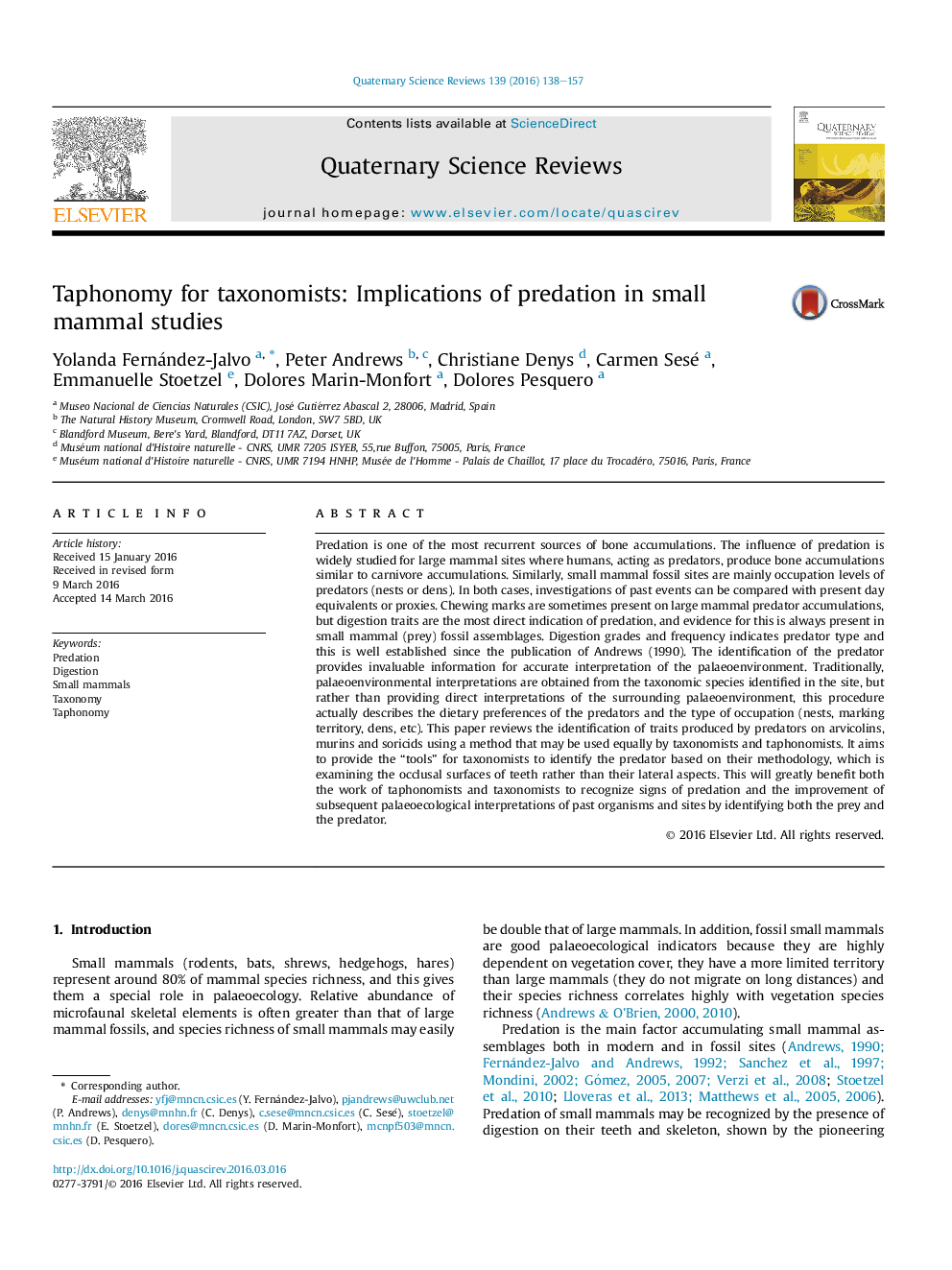| کد مقاله | کد نشریه | سال انتشار | مقاله انگلیسی | نسخه تمام متن |
|---|---|---|---|---|
| 6445432 | 1640796 | 2016 | 20 صفحه PDF | دانلود رایگان |
عنوان انگلیسی مقاله ISI
Taphonomy for taxonomists: Implications of predation in small mammal studies
دانلود مقاله + سفارش ترجمه
دانلود مقاله ISI انگلیسی
رایگان برای ایرانیان
کلمات کلیدی
موضوعات مرتبط
مهندسی و علوم پایه
علوم زمین و سیارات
زمین شناسی
پیش نمایش صفحه اول مقاله

چکیده انگلیسی
Predation is one of the most recurrent sources of bone accumulations. The influence of predation is widely studied for large mammal sites where humans, acting as predators, produce bone accumulations similar to carnivore accumulations. Similarly, small mammal fossil sites are mainly occupation levels of predators (nests or dens). In both cases, investigations of past events can be compared with present day equivalents or proxies. Chewing marks are sometimes present on large mammal predator accumulations, but digestion traits are the most direct indication of predation, and evidence for this is always present in small mammal (prey) fossil assemblages. Digestion grades and frequency indicates predator type and this is well established since the publication of Andrews (1990). The identification of the predator provides invaluable information for accurate interpretation of the palaeoenvironment. Traditionally, palaeoenvironmental interpretations are obtained from the taxonomic species identified in the site, but rather than providing direct interpretations of the surrounding palaeoenvironment, this procedure actually describes the dietary preferences of the predators and the type of occupation (nests, marking territory, dens, etc). This paper reviews the identification of traits produced by predators on arvicolins, murins and soricids using a method that may be used equally by taxonomists and taphonomists. It aims to provide the “tools” for taxonomists to identify the predator based on their methodology, which is examining the occlusal surfaces of teeth rather than their lateral aspects. This will greatly benefit both the work of taphonomists and taxonomists to recognize signs of predation and the improvement of subsequent palaeoecological interpretations of past organisms and sites by identifying both the prey and the predator.
ناشر
Database: Elsevier - ScienceDirect (ساینس دایرکت)
Journal: Quaternary Science Reviews - Volume 139, 1 May 2016, Pages 138-157
Journal: Quaternary Science Reviews - Volume 139, 1 May 2016, Pages 138-157
نویسندگان
Yolanda Fernández-Jalvo, Peter Andrews, Christiane Denys, Carmen Sesé, Emmanuelle Stoetzel, Dolores Marin-Monfort, Dolores Pesquero,